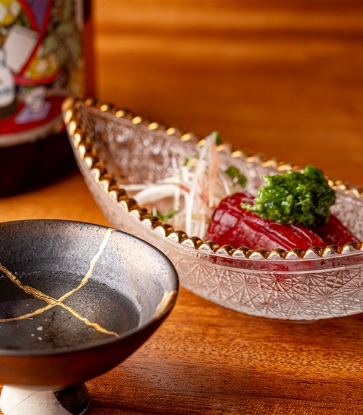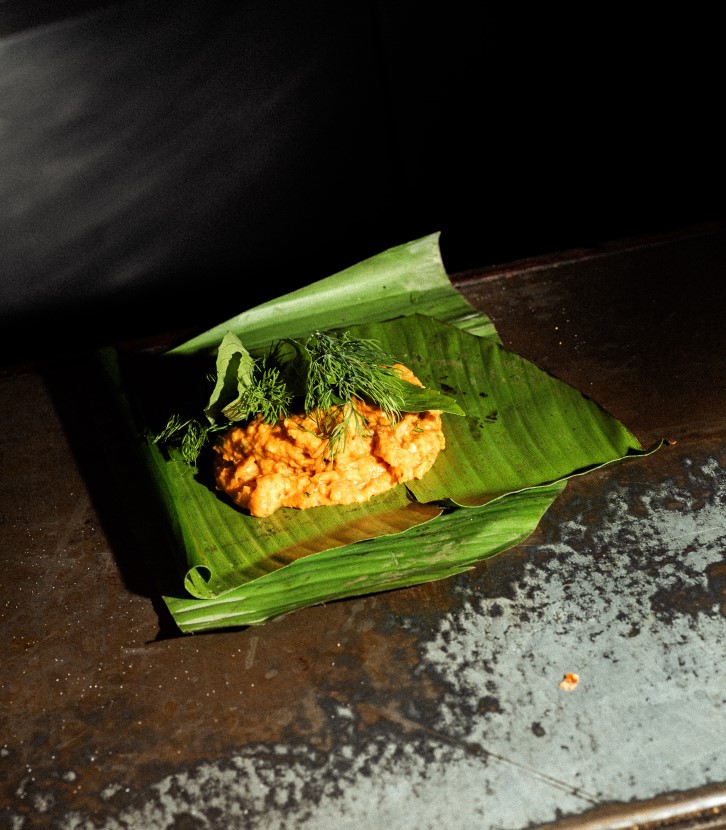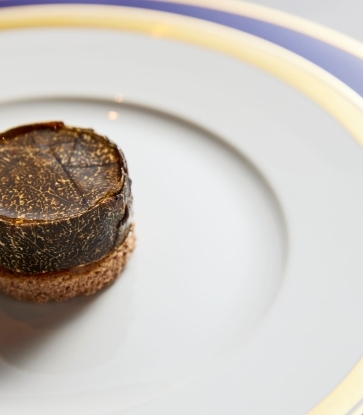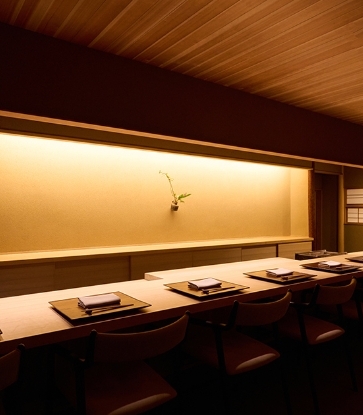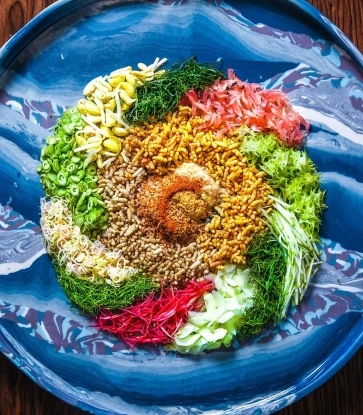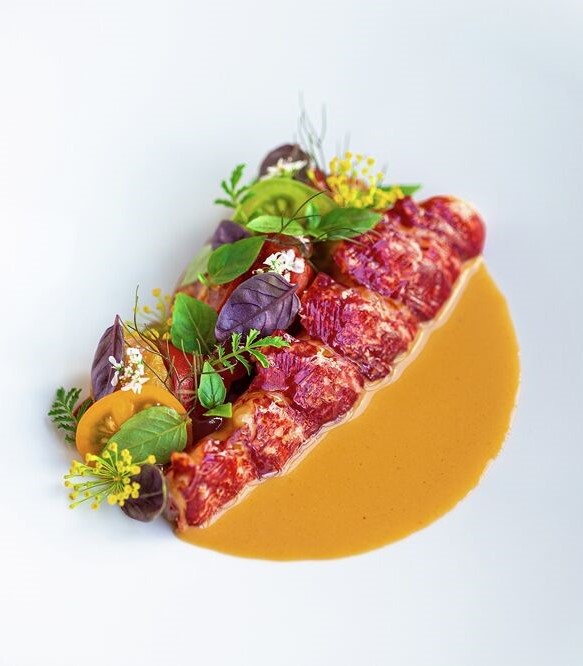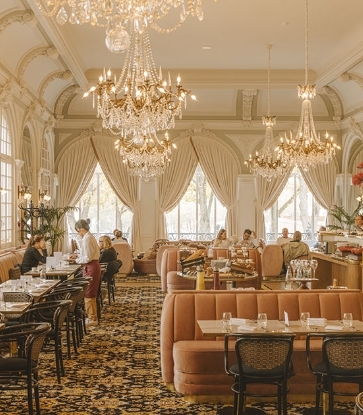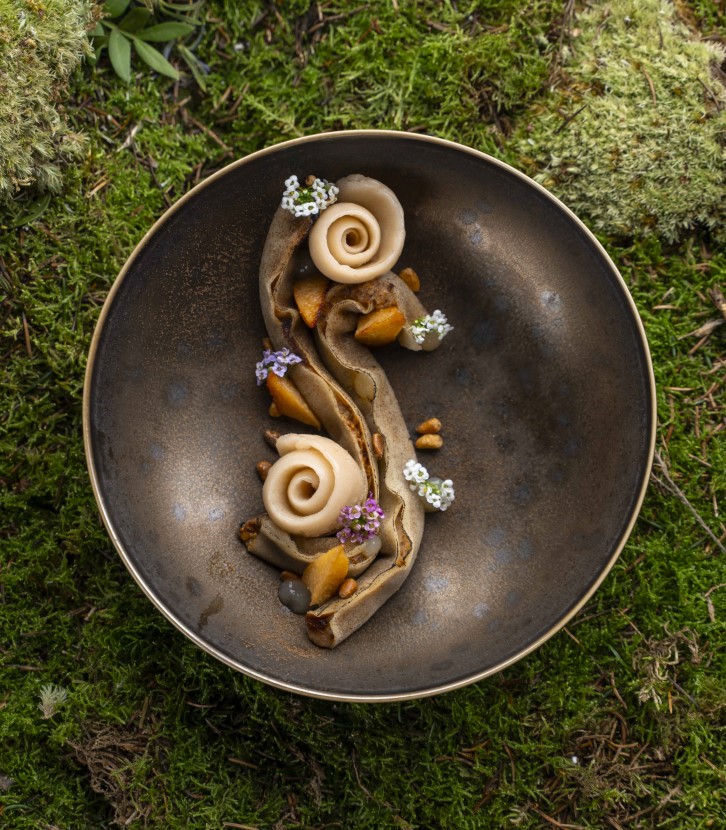Since opening in the autumn of 2024, Chef Willy Monroy has made waves with milpa, Japan’s first-ever MICHELIN star Mexican restaurant.
Hailing from southwestern Mexico, Monroy's journey took a pivotal turn when he joined the kitchen team at noma Kyoto, where the cutting-edge approach to gastronomy inspired him to rethink his own culinary direction.
This led to the transformation of his previous traditional restaurant into milpa, complete with a new name, reimagined interior and an evolved food style.
Today, the restaurant is lauded for its modern Mexican dishes rooted in indigenous ingredients and elevated with a touch of Japanese influence. Here, an anonymous MICHELIN inspector reveals all about their experience at Osaka’s history-making Mexican hotspot.
Arrival
Situated near Shinsaibashi, Kitahorie is a popular shopping district lined with restaurants and bars. Among these sits an unassuming black facade and a small sign that welcomes you to milpa, Osaka’s innovative one-MICHELIN-star restaurant.
Related: What is a Michelin Star?
Inside, cactus plants set the scene, while the natural materials that adorn the dining room exude a relaxed Mexican ambience. A warm light envelops the restaurant’s sole four tables, and a spotlight illuminates the kitchen as though it were a theatrical stage. The cactus theme extends to table decorations, while plates and bowls shipped in from Mexico add an authentic touch.

The team
A glance across the kitchen reveals a genuinely multicultural team. The casual apron and t-shirt attire combined with the warm smile of the chef who occasionally looks our way, puts us instantly at ease. Service is led by a manager who doubles as a sommelier, while the kitchen crew steps out to explain the dishes themselves. Hospitality grounded in teamwork brings a sense of theatre to the evening, infusing the dining experience with vibrancy and energy.
The food
While rooted in the ingredients of the Indigenous Mexican people and traditional cooking techniques, Monroy’s aim is to create a modern expression of Mexican cuisine, much like an elevated take on Tex-Mex. Mexican staples like corn, chilli peppers and cacao are imported from Mexico. Vegetables, fish and meat, meanwhile, are sourced in Japan, before being cooked over a wood flame. Spices and herbs are skillfully incorporated into the original dishes, emitting an alluring, exotic aroma. Monroy blends elements of French cuisine and modern techniques in his ongoing exploration of what Mexican food can become, offering a taste of culinary history while embracing a forward-looking vision.

Dishes we sampled
We opted for the Chef’s Choice course and beverage pairings, which were served in small portions. Here are some of the standout dishes:

Avocado tostada, dry-cured ham and sea urchin croquette
The traditional tostada is served cold, consisting of a fried tortilla topped with avocado and wood sorrel leaf. Seared fatty otoro tuna sashimi hides within, perfumed with a hint of Szechuan oil.
The hot croquette contains dry-cured ham, sea urchin and jalapeño pepper, served in a sea urchin shell. The breading is dusted with nori powder and topped with sea urchin sashimi. Served side by side, the dishes evoke the gifts of the mountains and the sea.

Japanese amberjack carpaccio with fish sauce and a cornmeal tlayuda topped with chilli pepper paste
Sauce plays a central role in Mexican cuisine and extends far beyond the beloved salsa. Each dish on the menu starts with an explanation of its sauce in a reflection of how deeply the staff wants diners to appreciate its significance. The fish sauce is a traditional white sauce whose name means ‘tiger’s milk’. On the day we visited, the sauce was made from isaki (chicken grunt fish) and citrus juice, while a Japanese amberjack carpaccio was covered with borage flowers.
The tlayuda is a cracker that hails from Oaxaca, often called a Mexican pizza. Chilli pepper paste is kneaded into cornmeal and lightly grilled for a pleasant fragrance. The isaki sauce can also be spread on the cracker for a second flavour experience. Both dishes have beautiful colouring and a light flavour.

Green mole and wood-flame grilled cauliflower
Mole is an essential element of Mexican food. The term originally comes from a word meaning ‘mash’ and depicts a sauce in which various ingredients have been blended together. The traditional green sauce called ‘mole verde’ makes plentiful use of green vegetables and chilli. The cauliflower is grilled over a wood flame for a smoky aroma, which pairs beautifully with the mole and a scattering of edamame.

Enmolada with mole poblano
The best-known of the mole sauces is mole negro, a rich, dark blend of cacao, almonds, bananas and chilli peppers that strikes a balance between sweet and spicy. Traditionally paired with chicken, Monroy opts for duck, recognising its affinity with the sauce.

Arroz with Ise shrimp
Bomba rice, a common staple in Mexico, is an essential ingredient in arroz, a popular Mexican rice dish. In this variation, the rice is cooked in a shrimp and tomato broth, before being topped with Ise shrimp and coriander leaves, and served with hollandaise sauce.
Conclusion
The restaurant’s name, milpa, comes from the Nahuatl language of the Aztec civilisation and refers to a traditional farming method of growing different crops in the same field throughout the year. This practice has long sustained fertile soil and plentiful harvests.
Out of respect for the wisdom and tradition of his forebearers, Monroy likens his culinary approach to the milpa farming method, cultivating a new expression of Mexican cuisine in Osaka.
The milpa team is boldly charting new territory, working together to craft a narrative that unfolds at the dining table—a journey that has earned them Japan’s first Michelin star for Mexican cuisine.

Top Image: © milpa



